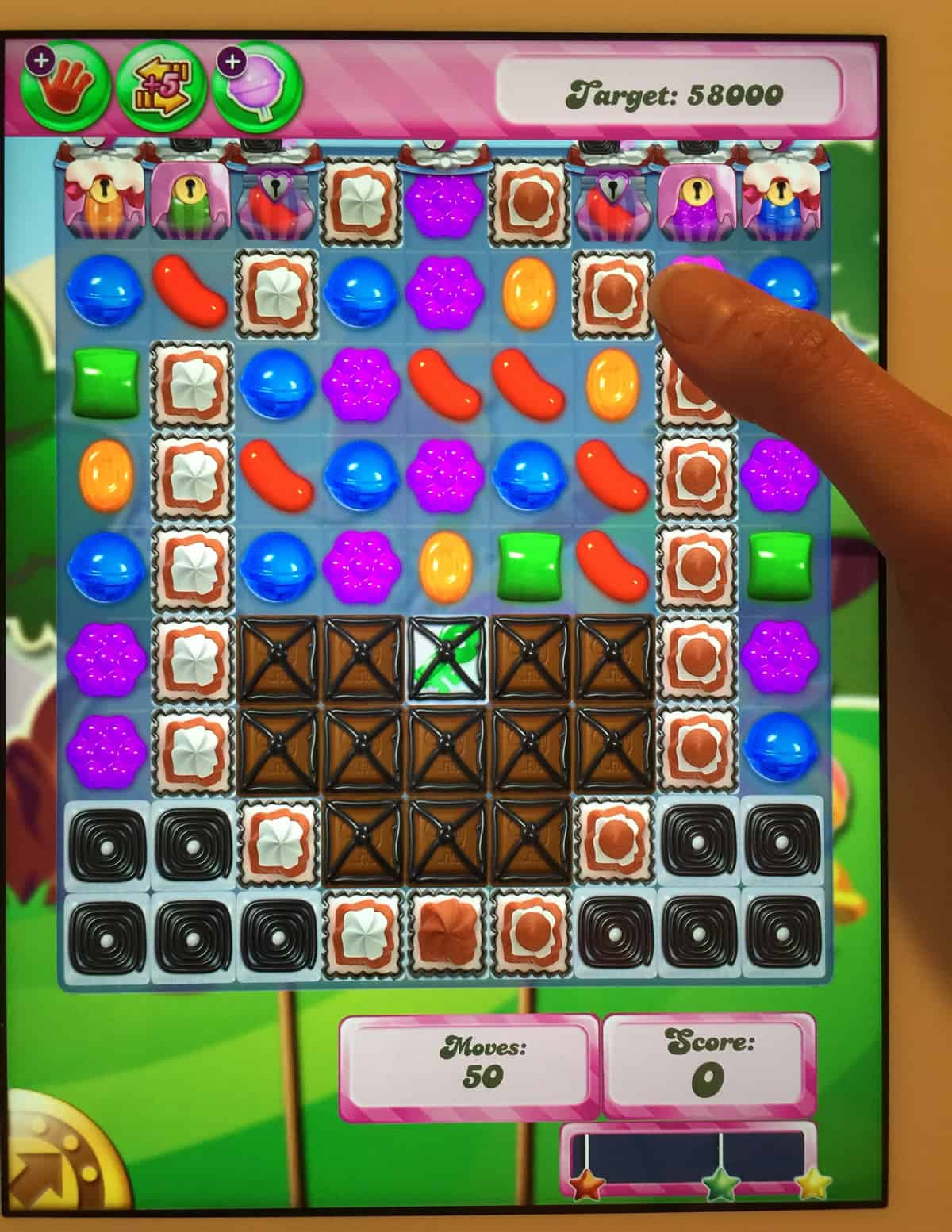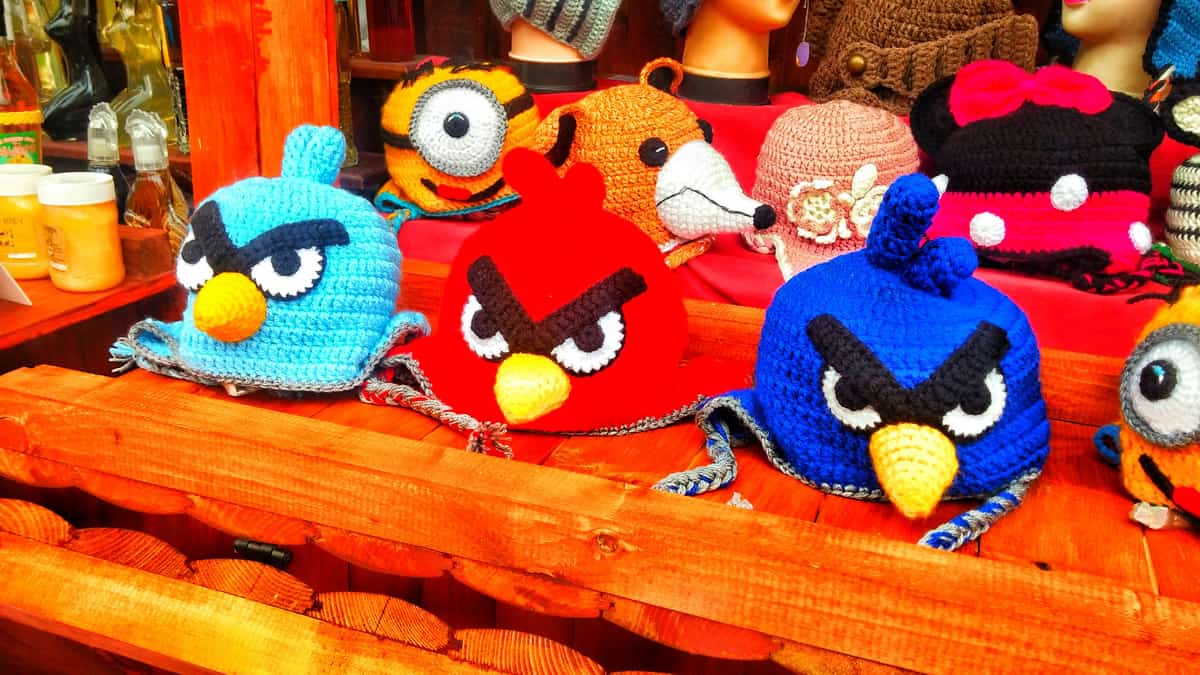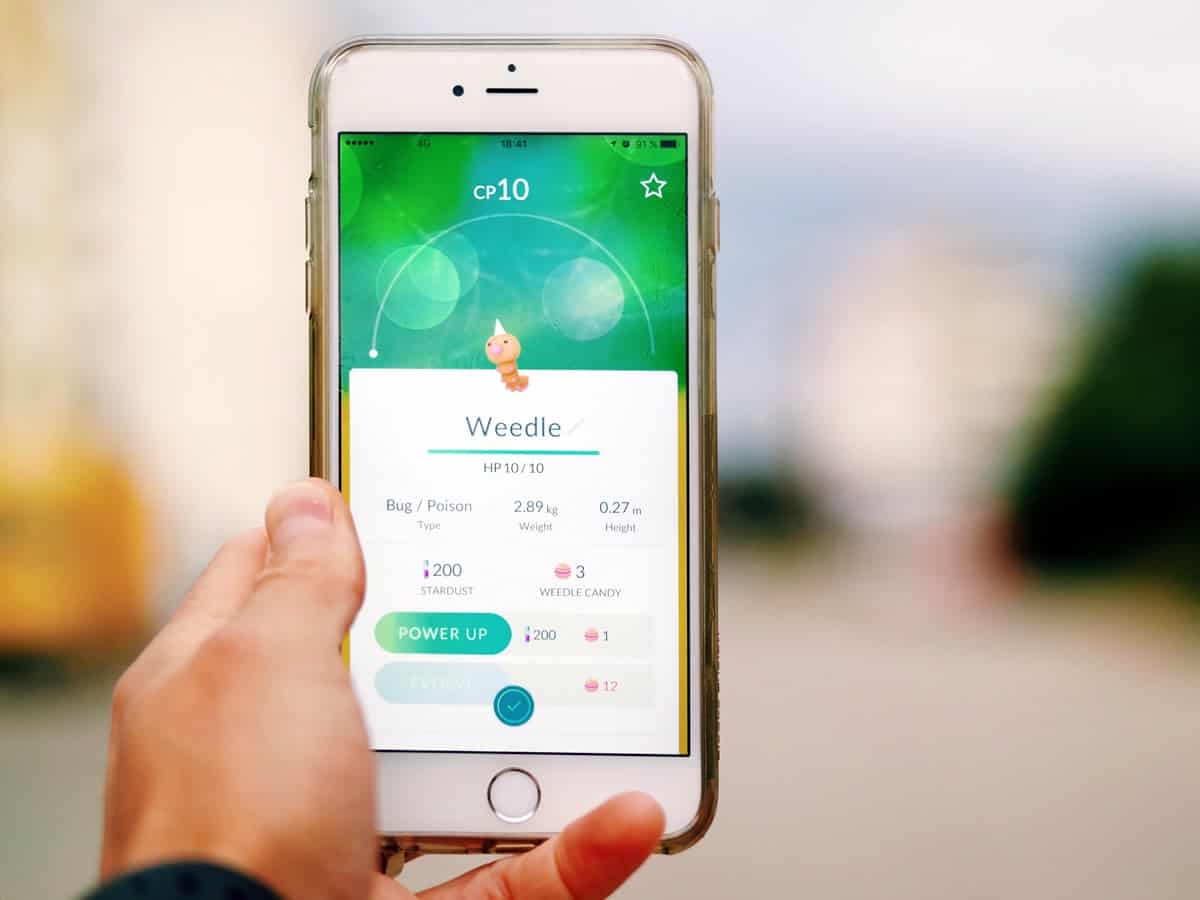Addiction is based around the pleasure (or reward) center of our brains, which is controlled and regulated by a neurotransmitter called dopamine. When we do something that triggers the reward center, dopamine is released, which gives us a little high. In the uncertain world we live in, it makes sense that we’d turn to addictive mobile games to help manage our stress levels.
Think about the last time you learned how to do something new, like how to ice skate. You might have been excited to try it, but nervous you’d fall and you probably did fall — more than once — but that first time you were able to make it around the ice rink, you were on top of the world. It made you want to take another lap, didn’t it? And perhaps another after that.
Your brain gave you a nice shot of dopamine and that made you want to keep going, which is exactly what happens to us when we pick up our favorite mobile games. The Candy Crushes, Angry Birds, and Pokémon GOs of the world have us hooked, but what is it about them that keeps us coming back for more? Why can’t we just close the apps? And what can you learn from these incredibly addictive games?

Candy Crush Saga + Candy Crush Soda Saga
Initially released by King in 2012 in a web browser platform, Candy Crush Saga spread like wildfire when it was incorporated into Facebook and transformed into a downloadable app. The concept is simple: by swapping candies to match three of the same color, those candies disappear and if you match more than three, a new super-powered candy is left in their place.
Each level gives you an objective (getting rid of jelly, getting ingredients to the bottom, etc.), but the complexity and difficulty of each level varies greatly. To keep you adequately hooked, game designers add new levels every single week, with the grand total being an estimated 2,845 levels in 191 episodes.
After the wild success of Candy Crush, King released a spin-off to expand their Candy Kingdom: Candy Crush Soda Saga. While the premise of the (also incredibly addictive) game is quite similar, additional elements seem to make the game both easier (you can make fish that swim across the board to help achieve your goal) and more difficult at the same time (the bubblegum just keeps expanding and trapping your candies).
Recently, designers added surprise gift boxes along the windy pathways of Candy Kingdom. If you reach the box, you get whatever prizes are inside — usually a color bomb or lollipop hammer, but the most valuable prize is the two hours of unlimited lives you get. If you reach the next box, it’s six hours and before you know it, it’s 2:00am and you’re supposed to get up for work at 6:00.

Luck Be a Lady
How “good” you are at Candy Crush is about patience and a bit of skill, but there is a substantial element of luck at play. If the objective is to crush 200 blue candies, you’d better hope enough blue candies appear on your board to make the level beatable. If not, you’re bound to lose. Doesn’t this sound a teeny bit like a different addictive game?
Gambling certainly requires some luck. When you walk into a casino and sit down at a poker table, how skilled you are matters — it’s difficult to win if you don’t know the hierarchy of hands — but you also need a bit of luck on your side. The odds are heavily on the house (because that’s how casinos make money) and there are other people at the table, so you’ll need all the luck you can get to make sure the best combination of cards slide over to you.
It’s the mixture of thinking you can win plus the belief that you are good at the game which keeps people sitting at that poker table — and it’s the same reason we keep hitting “play” in our Candy Crush apps. When you lose, the app even taunts you, saying “You failed!” with a conveniently addictive “retry” button just below.
If you didn’t reach that gift box, you’ll eventually run out of lives, which is probably not a bad thing, but don’t worry — the app will tell you when you are loaded with new ones. And if you really can’t wait, you can buy more or ask your friends for a life.
The Angry Birds Empire
The original Angry Birds app was released by Finnish game maker Rovio in December 2009. Almost overnight, it hit the top of the charts in Finland and by February 2010, it was number one in the App Store in both the U.K. and the U.S. According to Rovio CEO Mikael Hed, the Angry Birds concept started with just a screenshot of a bird character that seemed angry.
As for the gameplay, Hed points to an old rule of thumb: “it has to be easy to pick up and play, but hard to master” and Angry Birds fits perfectly into that category. The first time you open the app, you know what you’re supposed to do. There is a huge slingshot on the left with a line of birds just waiting to be catapulted into mean pigs and their houses on the right.
As you progress through the game and new birds with various powers are added, a simple graphic appears to demonstrate what this new character can do for you. From there, you’re good to go. You never run out of lives, so there is almost no limit to how long you can play in one sitting. As you move forward, you unlock new levels, keeping it fresh, amusing, and oh, so addicting.
How Angry Birds is a Different Kind of Addictive Game
Sure, Angry Birds has all the elements of an addictive game — you have a mission and you are rewarded in some way for reaching it. Once you feel that little shot of dopamine, you want to continue to the next level. And the next one. And the next one.
But the thing that makes Angry Birds a different kind of addictive game is the objective: you’re beating the bad guys. Everyone loves an underdog story. These mean pigs bully their way into the nests and steal the birds’ eggs. Who wouldn’t want to help them? Add the simple storyline with endearing characters to some gamers’ desire to three-star all the levels, and you have the perfect recipe for a majorly addictive game.

The characters help combine traditional story-based video games with the simple type of game usually made for smartphones — and people love those characters. Hed says that Rovio receives so much fan mail that they have a dedicated staff member to handle it. Kids send in pictures they’ve drawn of the characters, game designers have incorporated fans’ ideas for new levels, and who could forget the dad who built his son a playable Angry Birds cake?
The Angry Birds characters have become an industry all on their own. They are so popular that Sony Pictures even took the game to the big screen. The Angry Birds Movie was released about 6.5 years after the app’s initial release and has reportedly grossed more than $349 million dollars worldwide (so far).
If you’ve managed to earn three-star scores on each level throughout the original game, check out what the characters are up to in any of their incredibly addictive Angry Birds variation games, including Angry Birds Space, Angry Birds Transformers, Angry Birds Rio, and of course: Angry Birds Star Wars.
The Pokémon GO Explosion
Pokémon GO was released in July 2016 and by the end of the month, it seemed like everyone was wandering around the neighborhood, looking for rare Pokémon and trying to “catch ‘em all.” The game is largely individual-based at the beginning. Sure, you can play with friends, but your account is your own. The Pokémon you collect just sort of hang out in your app while you’re busy leveling-up. But once you reach level five, you can finally enter gyms.

Gyms are where the game becomes team-oriented. You are prompted to choose a team (Instinct, Mystic, or Valor), for which you will fight during battles between Pokémon characters at said gyms. With the addition of this team component, a whole new addictive element is added to an otherwise individually played game. It gets you talking to your friends about what team they’ve chosen and it connects you with millions of others around the world.
Pokémon GO has all the markers of a highly addictive game, especially in that you are receiving rewards for completing tasks. You search for objects, collect them, hatch eggs, and battle other teams. When you get your reward — whether big or small — you get that satisfying little shot of dopamine that keeps you coming back for more.
Hatching eggs hits the same pleasure center in your brain as gambling because you never really know what you’re going to get when that little thing cracks open. (Are you sensing a pattern?) In theory, the longer the walking distance, the rarer the Pokémon is assumed to be — but of course, that isn’t always the case.
Let’s say you pick up a 10km egg (meaning you have to walk 10 kilometers — 6.21 miles — to hatch it). You’ve been searching for a Snorlax and you’re hoping this is your shot. So you spend the better part of a week trying to get a walk in whenever humanly possible and when it finally hatches, it’s another Jigglypuff. Seriously?
Are you irritated? Sure. But, does this deter you? Does it make you delete the game? Of course not. Just because you didn’t get the result you were hoping for doesn’t mean that you give up! Maybe the next 10km egg will be your coveted Snorlax. The struggle is real with addictive games, but Pokémon GO takes it to another level that keeps us hooked.
What Makes Pokémon GO Such an Addictive Game
If you’re one of the five people on the planet who has never played the game, you may have noticed something a bit different about this one from the description above. Unlike most video games that keep you stationary, playing Pokémon GO means walking — a lot. Walking is how you hatch eggs, collect Poké Balls, and (of course) catch Pokémon.

Walking is one of the healthiest and safest forms of exercise. It’s low-impact, but if you’re going at a brisk pace, it’s enough to get your heart rate up and burn some calories. When we exercise, our brains release endorphins and endorphins make us happy. For this reason, exercise is prescribed for people who suffer from anxiety and depression and people generally find that it helps. This is where Pokémon GO hit the addictive game jackpot.
Just like that enticing dopamine explosion we get from hatching the egg and finally getting the Snorlax, endorphins keep us coming back for more, which means they can be addictive, too. Psychologists generally agree that exercise-addiction is a real thing (runner’s high, anyone?), so it’s not really surprising that Pokémon GO is such a huge hit. When you combine the dopamine from the hatched egg with the endorphins from your Tuesday 5K, a whole new market segment opens up, leading the way for ultra-addictive games like Pokémon GO.
What You Can Learn from These Addictive Games
We all want people to be (responsibly) addicted to our mobile games. If people can’t stop playing them, it’s because they love them and maybe they are telling their friends to download them, too. We should all be so lucky to work on an app as wildly successful as the three we’ve discussed here, but it’s not that simple. So what can you learn from these three that can help you build the next addictive game?
First of all, don’t underestimate simplicity. Remember what Mikael Hed said about making the game simple enough to pick up, but difficult to master. Candy Crush is all about matching candies together and Pokémon GO is essentially just collecting rewards. The games become more complex as you progress through them, but they are incredibly easy to begin with, which gets people in the door with some quick bursts of dopamine.
Second, be generous with your rewards. Candy Crush offers a spinning wheel to win a booster every day. Angry Birds added the Mighty Eagle to help you beat levels you are stuck on. If people can’t level up within a reasonable amount of time (being stuck on one level for a solid month is not considered reasonable), they are likely to get frustrated and bored — a combination that results in deletion.
Finally, always be updating. As the more advanced players get through your app, they will be looking for additional quests, levels, or rewards. If they reach the very last level and you’re not prepared with a new batch quickly, they’ll lose interest. It’s best to stay a few steps ahead of your users — but don’t forget to listen to their feedback and adjust accordingly.
And when you get started, remember to build a working prototype to demonstrate your million dollar addictive game idea to your team. Proto.io lets anyone build mobile app prototypes that feel real. No coding or design skills required. Bring your ideas to life quickly! Sign up for a free 15-day trial of Proto.io today and get started on your next mobile app design.





